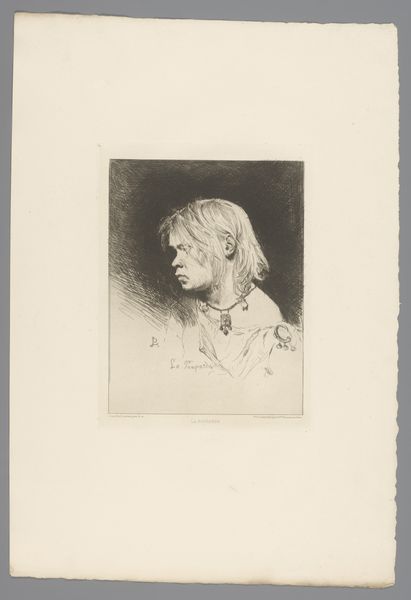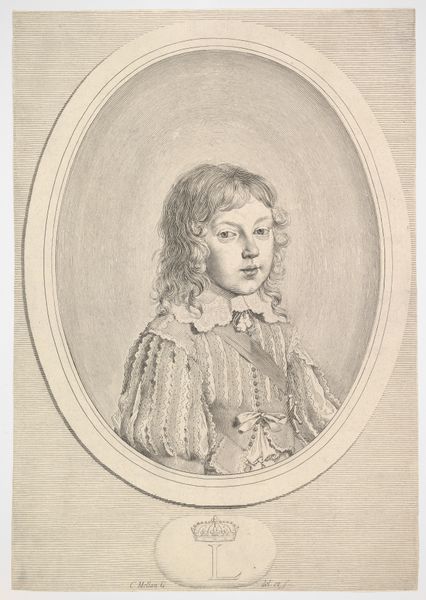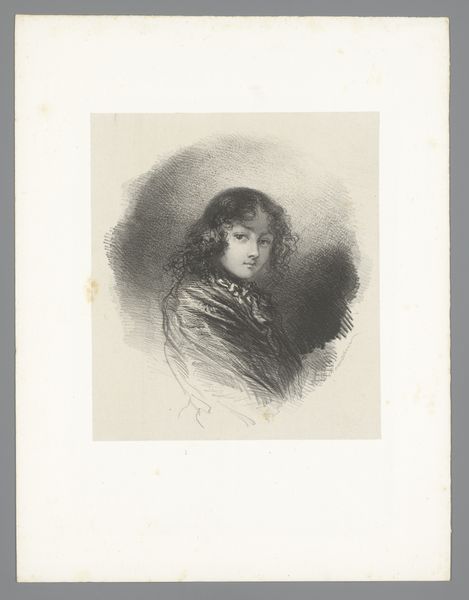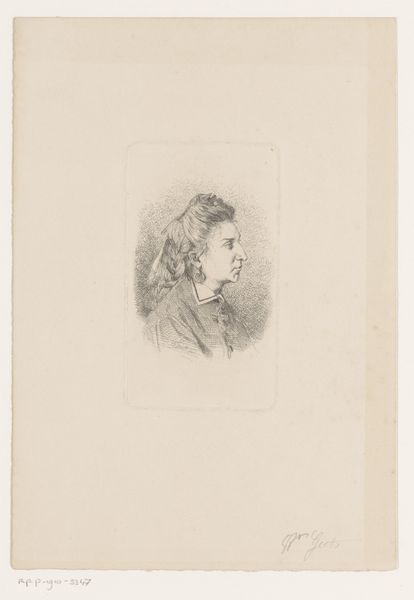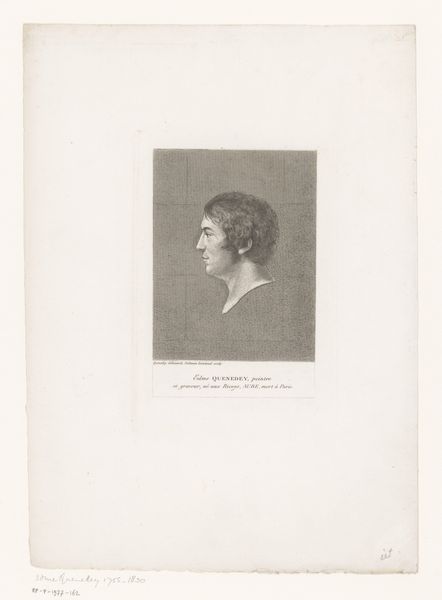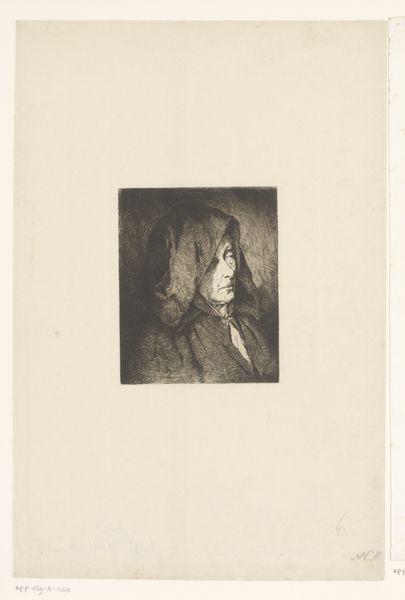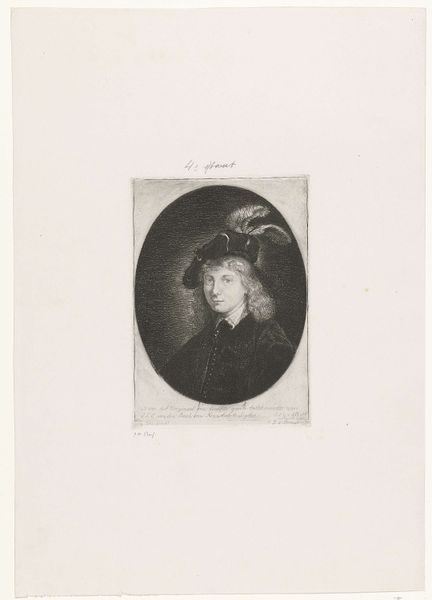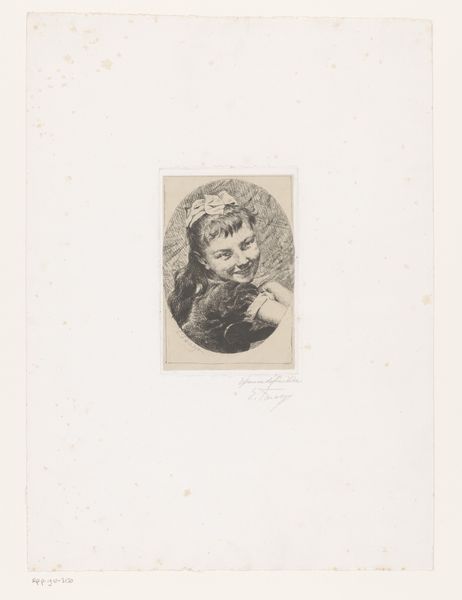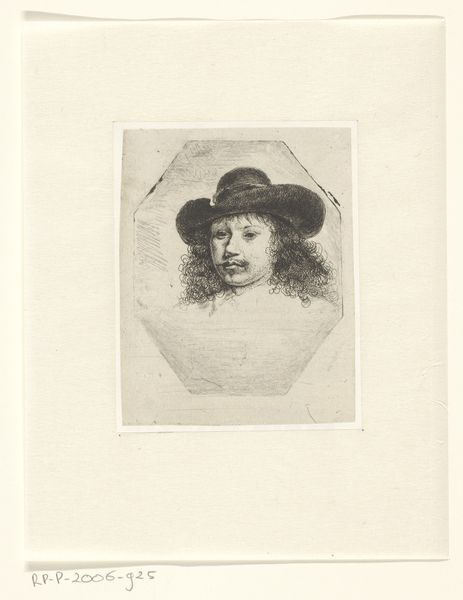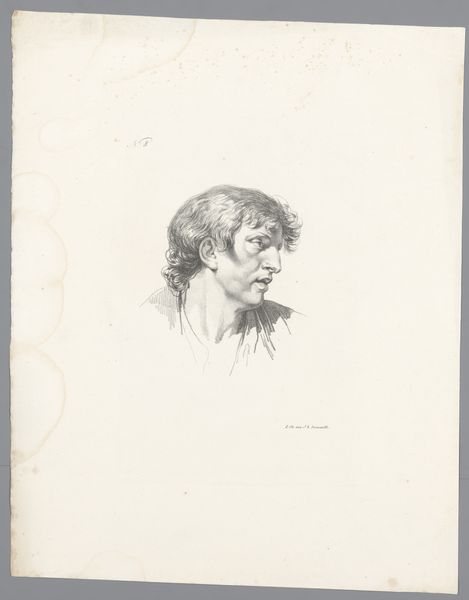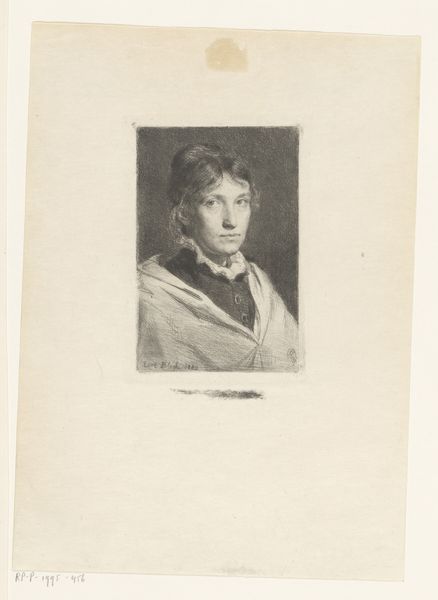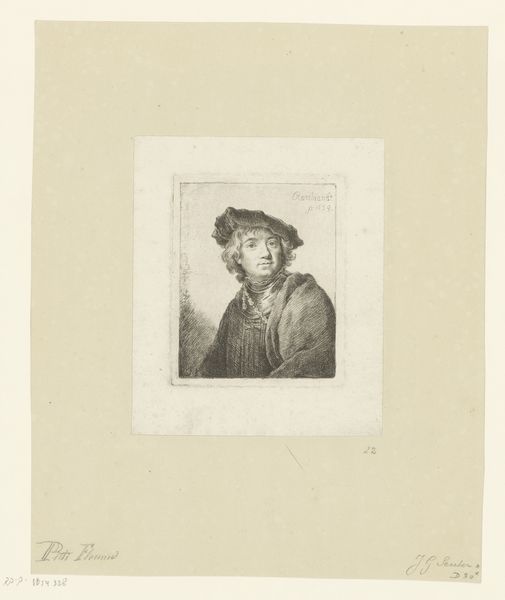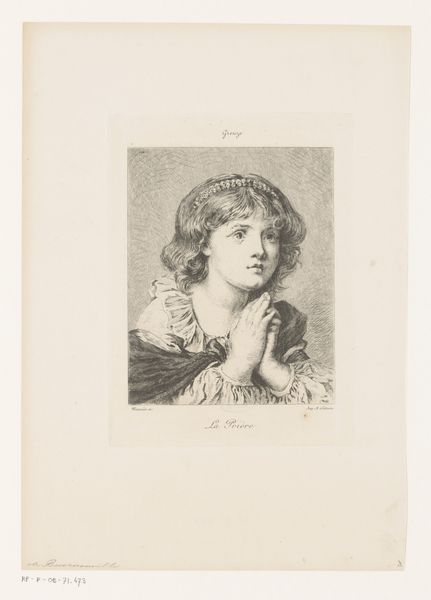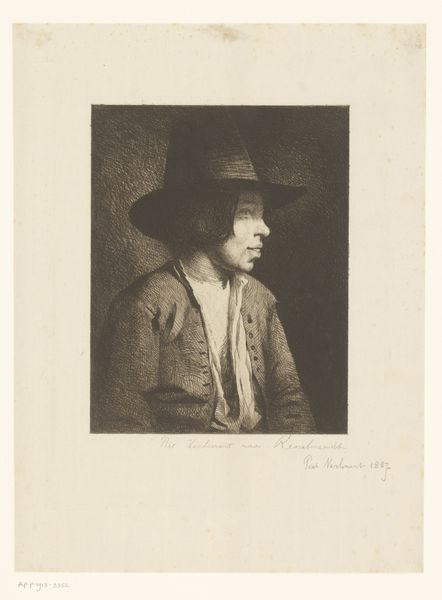
print, intaglio, engraving
#
portrait
# print
#
intaglio
#
figuration
#
engraving
Dimensions: height 263 mm, width 213 mm
Copyright: Rijks Museum: Open Domain
Editor: Here we have "Portret van een jongeling," a print by Friedrich Wilhelm Burmeister, dating from 1855 to 1915. It’s an engraving, done in intaglio, a rather serious-looking portrait. What do you see in this piece, Professor? Curator: I see a carefully constructed image of masculine identity during a period of shifting social and political landscapes. The portrait’s stark presentation, rendered in the unforgiving medium of engraving, demands that we confront not only the sitter, but also the era’s prescribed notions of masculinity and class. I would ask: who was considered worthy of such a portrait and what power structures underpinned this determination? Editor: That’s a good question. The subject is idealized, perhaps? The high collar, the hint of embellishment... Curator: Precisely! The collar speaks to a performative aspect of societal expectations. The subtle details—what does it tell us about access, privilege, and the constructed self? Think about feminist theories which interrogate portraiture, revealing it as a mechanism for reinforcing patriarchal dominance. Is the sitter consciously adopting a particular persona, or is he merely reflecting the expectations imposed upon him by his social context? Editor: So, beyond the aesthetic, it is really a statement of social position? Curator: Absolutely. It prompts us to reflect on the way visual representation solidifies power dynamics and perpetuates societal norms. Moreover, who is missing from this representation? Whose stories aren’t being told, whose images are erased? How does this work engage with and perhaps, exclude other voices? Editor: That reframes it completely! Now I'm wondering what wasn't included in this depiction. Curator: Exactly! Art isn’t created in a vacuum; it’s an active participant in the cultural conversation. This work compels us to ask critical questions about the historical moment of its creation, inviting us to challenge dominant narratives and amplifying marginalized voices.
Comments
No comments
Be the first to comment and join the conversation on the ultimate creative platform.
